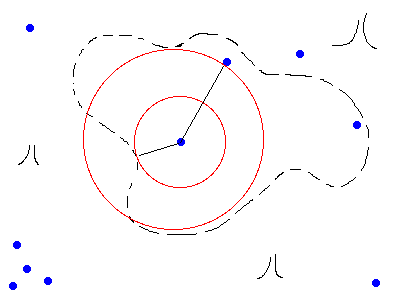Open mapping theorem (complex analysis)
In complex analysis, the open mapping theorem states that if U is a connected open subset of the complex plane C and f : U → C is a non-constant holomorphic function, then f is an open map (i.e. it sends open subsets of U to open subsets of C).
The open mapping theorem points to the sharp difference between holomorphy and real-differentiability. On the real line, for example, the differentiable function f(x) = x2 is not an open map, as the image of the open interval (−1,1) is the half-open interval [0,1).
The theorem for example implies that a non-constant holomorphic function cannot map an open disk onto a portion of any real line embedded in the complex plane.
Proof

Assume f:U → C is a non-constant holomorphic function and is a connected open subset of the complex plane. We have to show that every point in is an interior point of , i.e. that every point in is contained in a disk which is contained in .
Consider an arbitrary in . Then there exists a point in U such that . Since U is open, we can find such that the closed disk around with radius d is fully contained in U. Since U is connected and f is not constant on U, we then know that f is not constant on B. Consider the function . Note that is a root of the function.
We know that g(z) is not constant, and by further decreasing d, we can assure that g(z) has only a single root in B. (The roots of holomorphic non-constant functions are isolated.) Let e be the minimum of |g(z)| for z on the boundary of B, a positive number. (The boundary of B is a circle and hence a compact set, and |g(z)| is a continuous function, so the extreme value theorem guarantees the existence of this minimum.) Denote by the disk around with radius . By Rouché's theorem, the function will have the same number of roots in B as for any within a distance of . Thus, for every in , there exists one (and only one) in so that . This means that the disk D is contained in , which is a subset of . Thus is an interior point of .
References
- Rudin, Walter (1966), Real & Complex Analysis, McGraw-Hill, ISBN 0-07-054234-1















